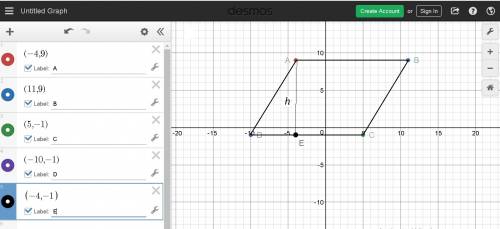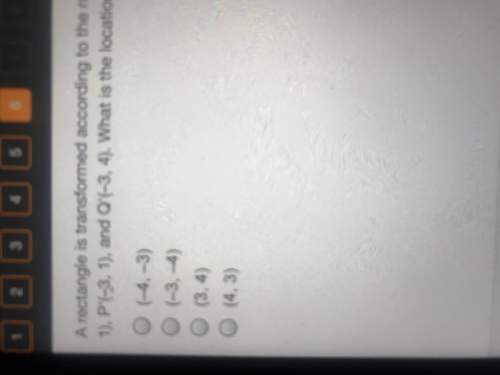
Mathematics, 21.01.2020 09:31 psychocatgirl1
What is the area of a parallelogram whose vertices are a(−4, 9) , b(11, 9) , c(5, −1) , and d(−10, −1) ?
enter your answer in the box.
|__| units²

Answers: 2


Other questions on the subject: Mathematics

Mathematics, 21.06.2019 15:40, tylorroundy
Given the following sampling distribution of one mean with a sample size 49, from a normally distributed population, find the population standard deviation, o.79828588912497
Answers: 3

Mathematics, 21.06.2019 19:30, indiaseel2744
Suppose i pick a jelly bean at random from a box containing one red and eleven blue ones. i record the color and put the jelly bean back in the box. if i do this three times, what is the probability of getting a blue jelly bean each time? (round your answer to three decimal places.)
Answers: 1

Mathematics, 21.06.2019 20:10, tiggyandrep2dbee
Look at the hyperbola graphed below. the hyperbola gets very close to the red lines on the graph, but it never touches them. which term describes each of the red lines? o o o o a. asymptote b. directrix c. focus d. axis
Answers: 3

Mathematics, 21.06.2019 22:00, KindaSmartPersonn
20 points 1. your friend, taylor, missed class today and needs some identifying solutions to systems. explain to taylor how to find the solution(s) of any system using its graph. 2. taylor graphs the system below on her graphing calculator and decides that f(x)=g(x) at x=0, x=1, and x=3. provide taylor some feedback that explains which part of her answer is incorrect and why it is incorrect. f(x)=2x+1 g(x)=2x^2+1
Answers: 2
You know the right answer?
What is the area of a parallelogram whose vertices are a(−4, 9) , b(11, 9) , c(5, −1) , and d(−10, −...
Questions in other subjects:



Mathematics, 28.04.2021 16:30

Mathematics, 28.04.2021 16:30


























